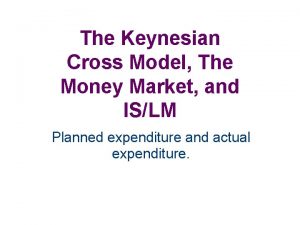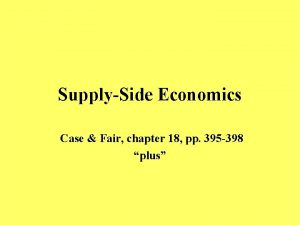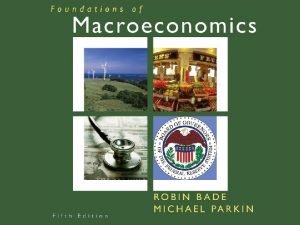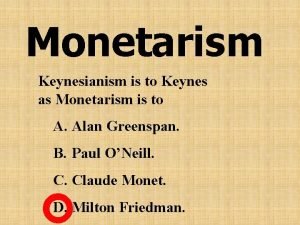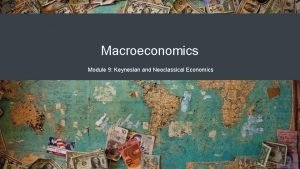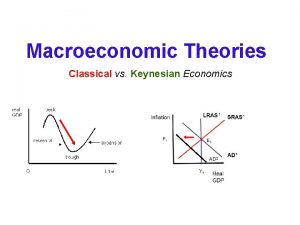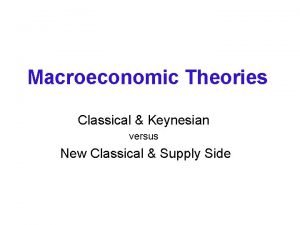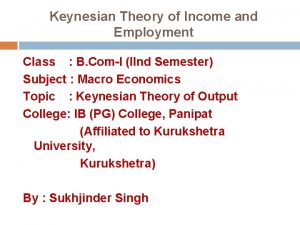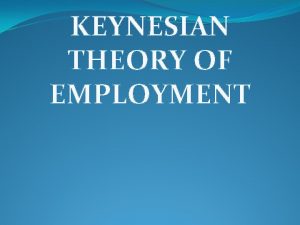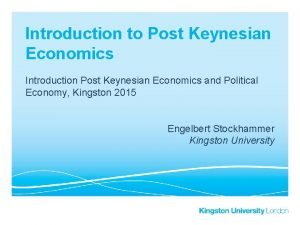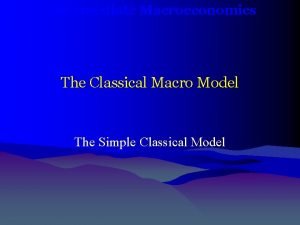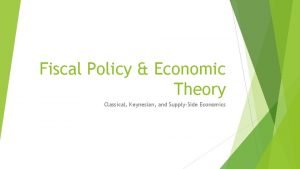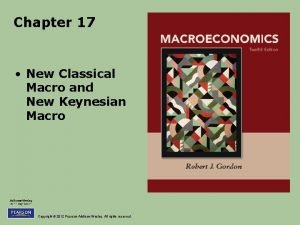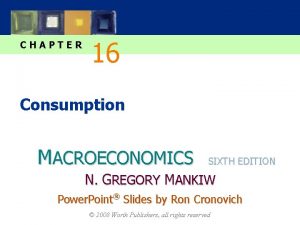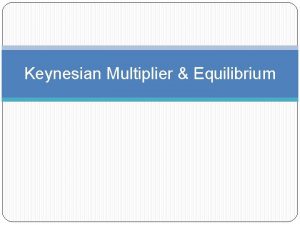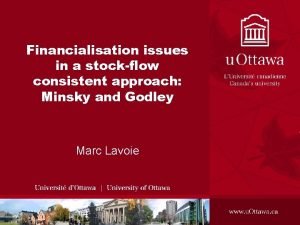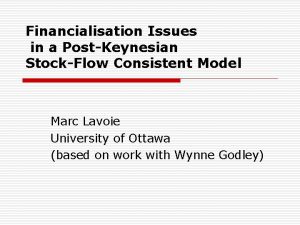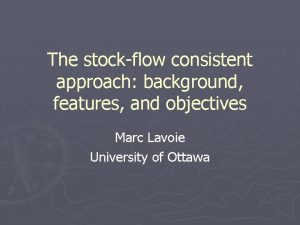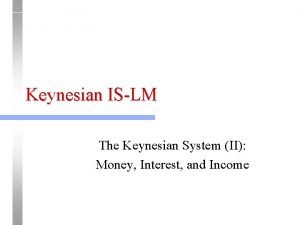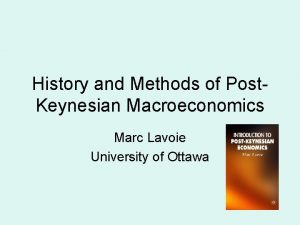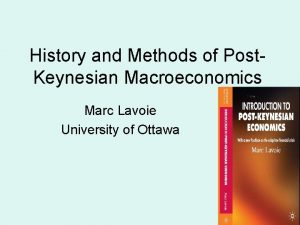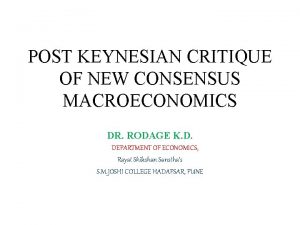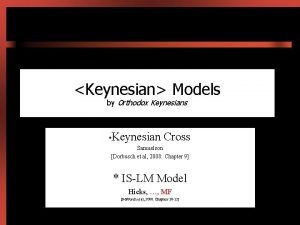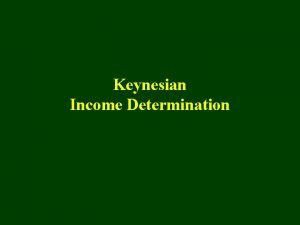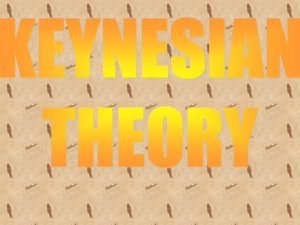Post Keynesian StockFlow Consistent Macroeconomics for System Dynamicists
![Post Keynesian Stock-Flow Consistent Macroeconomics for System Dynamicists [An enhanced methodology? ] Neil Smith, Post Keynesian Stock-Flow Consistent Macroeconomics for System Dynamicists [An enhanced methodology? ] Neil Smith,](https://slidetodoc.com/presentation_image_h/210b9e54ffc40151edb02daaf5de75b7/image-1.jpg)










![[END] [END]](https://slidetodoc.com/presentation_image_h/210b9e54ffc40151edb02daaf5de75b7/image-12.jpg)




- Slides: 16
![Post Keynesian StockFlow Consistent Macroeconomics for System Dynamicists An enhanced methodology Neil Smith Post Keynesian Stock-Flow Consistent Macroeconomics for System Dynamicists [An enhanced methodology? ] Neil Smith,](https://slidetodoc.com/presentation_image_h/210b9e54ffc40151edb02daaf5de75b7/image-1.jpg)
Post Keynesian Stock-Flow Consistent Macroeconomics for System Dynamicists [An enhanced methodology? ] Neil Smith, Doctoral Teaching Assistant, Department of Economics July 11 th 2017

Problems with economic modelling What economics needs… 1 Closed-loop system 1 Dynamic structure 2 Interrelationship of goods, money, information, and labor 2 Information flow and decision criteria 3 Over-estimation of volatility and irrationality 3 Continuity and momentum of the system 4 Evaluation of models 4 Model effectiveness 5 Linear equations Jay Forrester on 5 Non-linear Economics systems 6 Superposition - long-term vs short-term outcomes 7 Simultaneous algebraic equations 6 Long- and short-range responses 7 Differential equations MIT ‘D-memo zero’ 8 Time intervals – not suited for purpose 8 Incremental time intervals. 9 Differences of large magnitudes 9 Incremental changes in variables 10 Model complexity – models too small and incomplete 10 Model complexity appropriate for problem 12 Symbolism – lack of correspondence with reality 12 Clearly defined concepts 13 Coefficient accuracy 13 Structure more important than parameters 14 Multiple regression analysis – instability of functional relationships 15 Assumptions 15 More transparency, more tractable 16 Omissions 16 Include important concepts even if non-quantifiable Forrester, J. W. (1956 [2003]) 'Dynamic models of economic systems and industrial organizations (2003 republication a “Note tolend thethemselves Faculty Research From: Jay W. Forrester. November 5, 1956”'. 11 Explicit solutions – problems of generally don’t to solution Seminar. 11 Empirical solutions – generalisable “predictions” System Dynamics Review, 19 (4). pp 329 -345

‘Institutional’ & ‘Post Keynesian’ Economics “What Keynes really meant”! Contra- “Neoclassical”, orthodox, IS-LM … Followers of Keynes, Kalecki, Kaldor, Robinson Real-world explanation, policy oriented Dynamic growth in historical time (vs. logical time) Causal processes Path dependency & hysteresis Feedback Bounded rationality Disequilibrium Uncertainty Money is relevant • Much in common with ‘Institutional Economics’ • “Holistic, systemic, evolutionary” • Circular Cumulative Causation - Myrdal • • • Previously argued similarities with System Dynamics (Atkinson, 2004; Harvey, 1994; 2013; Radzicki, 1990; 2003; 2015; Radzicki and Sterman, 1993; Saeed and Radzicki, 1993) For epistemology of Institutional Economics See Myrdal (1978)

Post Keynesian ‘Stock-Flow Consistent’ (SFC) Modelling • • • (Primarily) financial accounting consistent Everything (money) comes from somewhere and goes somewhere ‘Structuralist’ approach (Taylor, 2004 p. 2) • “[SFC models] remove many degrees of freedom from possible configurations of patterns of payments at the macro level, making tractable the task of constructing theories to “close” the accounts into complete models. ” Copeland (1949); Tobin (1969, 1982); Backus et al. , (1980) Godley & Cripps (1983) Godley & Lavoie (2007) Balance sheet of Model SIM Money Stock Households Production Government +H 0 -H Σ 0 Households Production Government Σ Accounting (transactions) matrix for Model SIM “I have found out what economics is; it is the science of confusing stocks with flows. ” Michal Kalecki c 1936, quoted in Godley & Lavoie (2007) Consumption Govt. expenditures [Output] Factor income (wages) Taxes Change in stock of money Σ -C +C +G [Y] -WB +WB -T 0 0 -G +T -∆H +∆H 0 0 0

98 behavioural equations.

The circular flow of money sector + +

Samuelson’s ‘canonical’ circular flow diagram (1948) “…what appear to be two tanks … linked by pipes through which water (income) could flow” Backhouse, R. E. & Giraud, Y. (2010)


Overall view of Stock-Flow Diagram Godley & Lavoie’s Model SIM

Compare & Contrast - brainstorm System Dynamics Institutionalist PK-SFC Ontology Organic, systems thinking ontology Closely associated with Critical Realism Epistemology “All models are wrong” [? ] but we aim to understand key structures of systems. It’s the process of modelling, not the model. Simple models build intuition of how the world works. Start with simple and add complexity. Method Causal diagrams, stock-flow diagrams, feedback identification, delay identification, simulation. Accounting matrices, behavioral equations, simulation and perturbation. Presuppositions • • • Open vs closed system (endogenous vs exogenous) Generally closed system with endogenously driven behaviour, and interest of the endogenous dynamics Open system closed by ceteris paribus assumptions, exogenous stimulus creates dynamics Time Continuous (usually) Discrete (usually) Structure defines behavior; Parameter est. by observation/iteration Feedback and delays are key Narrative and dialectical (not just quantifiable); Goal-seeking behaviour (+ fundamental modes) Limiting factors • • • Model behaviour largely driven by its ‘architecture’; ‘Stylized facts’ as parameters Acknowledgement of feedback is largely implicit Largely still quantitatively driven; ‘Stock-flow norms’, ‘magic ratios’. ‘Unsustainable processes’

What does each offer in addition to the other? System Dynamics Perceived benefits Formal systems thinking Psychology and decision making Acquisition of knowledge Communication of knowledge, and accessibility • Flexible interdisciplinary (unstructured) • Conservation of flows principle • • Perceived • Unstructured? • Intractability of large problems? shortcomings • Endogenous vs exogenous? PK-SFC modelling Ready-audience of economists Proper ‘monetary circuit’ Portfolio choice (financial assets) Structured framework – fewer degrees of freedom • Exogenous vs endogenous? • • • “programmatic Walrasianism” Financial accounting focused By economists, for economists Unnecessarily complex? Non-optimising agents? Source/sink of monetary flow?
![END [END]](https://slidetodoc.com/presentation_image_h/210b9e54ffc40151edb02daaf5de75b7/image-12.jpg)
[END]

Atkinson, G. (2004) 'Common ground for institutional economics and system dynamics modeling'. System Dynamics Review (Wiley), 20 (4). pp 275 -286. Backus, D. , Brainard, W. C. , Smith, G. & Tobin, J. (1980) 'A Model of U. S. Financial and Nonfinancial Economic Behavior'. Journal of Money, Credit and Banking, 12 (2). pp 259 -293. Godley, W. & Cripps, F. (1983) Macroeconomics. Oxford: Oxford University Press. Godley, W. & Lavoie, M. (2007) Monetary Economics: An Integrated Approach to Credit, Money, Income, Production and Wealth. Basingstoke: Palgrave Macmillan. Harvey, J. T. (1994) 'Circular causation and the Veblenian dichotomy in the General Theory: An introduction to'. Journal of Post Keynesian Economics, 17 (1). pp 69. Harvey, J. T. (2013) 'Keynes's trade cycle: a system dynamics model'. Journal of Post Keynesian Economics, 36 (1). pp 105 -130. Radzicki, M. J. (2003) 'Institutional Economics, Post Keynesian Economics, and System Dynamics: Three Strands of a Heterodox Economics Braid'. International Confederation of Associations for Pluralism in Economics (ICAPE) Conference on the "Future of Heterodox Economics. " June 5 -7, 2003. University of Missouri - Kansas City. , pp 7. Radzicki, M. J. (2015) 'Was Alfred Eichner a System Dynamicist? '. in Lavoie, M. , Rochon, L. -P. and Seccareccia, M. (eds. ) Money and Macroeconomic Issues: Alfred Eichner and Post-Keynesian Economics Armonk, NY: M. E. Sharpe, pp 3 -21. Radzicki, M. J. & Sterman, J. D. (1993) 'Evolutionary Economics and System Dynamics'. The 11 th International Conference of the System Dynamics Society. Cancun, Mexico: System Dynamics Society. Available at: http: //www. systemdynamics. org/conferences/1993/proceed/index. htm. Saeed, K. & Radzicki, M. J. (1993) 'A Post Keynesian Model of Macroeconomic Growth, Instability, and Income Distribution', The 11 th International Conference of the System Dynamics Society. Cancún, Mexico. Tobin, J. (1969) 'A General Equilibrium Approach To Monetary Theory'. Journal of Money, Credit & Banking (Ohio State University Press), 1 (1). pp 15 -29. Tobin, J. (1982) 'Money and Finance in the Macroeconomic Process'. Journal of Money, Credit and Banking, 14 (2). pp 171 -204.

Godley & Lavoie’s simplest model: ‘Model SIM’ matrices and equations Balance sheet of Model SIM Money Stock Households Production Government +H 0 -H Σ 0 Households Production Government Σ Accounting (transactions) matrix for Model SIM Consumption Govt. expenditures [Output] Factor income (wages) Taxes Change in stock of money Σ -C +C +G [Y] -WB +WB -T 0 0 -G +T -∆H +∆H 0 0 0 Households Production Government Σ Behavioural (transactions) matrix for Model SIM Consumption Govt. expenditures [Output] Factor income (wages) Taxes Change in stock of money Σ -Cd +Cs +Gs [Y] -W. Nd +W. Ns -Ts 0 0 -Gd +Td -∆Hh +∆Hs 0 0 0 3. 1 Cs = Cd 3. 2 3. 3 3. 4 3. 5 3. 6 3. 7 3. 8 3. 9 3. 10 3. 11 a 3. 11 3. 12 Gs = Gd Ts = Td Ns = Nd YD = W · Ns − Ts Td = θ ·W · Ns θ < 1 Cd = α 1 · YD + α 2 · Hh− 1 0 < α 2 < α 1 < 1 ∆Hs = Hs − Hs− 1 = Gd − Td ∆Hh = Hh − Hh− 1 = YD − Cd Y = Cs + Gs Y = W · Nd = Y / W ∆Hh = ∆Hs

G = 20 in period 1 (instigates circular flow) Taxes ‘Austerity’ spending cut in period 31 Tax increase in period 51 Household Saving/dissaving Household Wealth Government Surplus/deficit Household Wealth/YD ratio GDP Disposable Income Consumption Household Wealth/income ratio Govt Debt/GDP Ratio

Consumer wealth decreases over time as government debt is reduced. In period 73 consumers increase propensity to consume out of income (implicitly reducing target wealth/YD ratio)… … spike in GDP is eliminated over time as stock-flow norm reasserts itself.
 New classical macroeconomics
New classical macroeconomics New classical and new keynesian macroeconomics
New classical and new keynesian macroeconomics Keynesian cross diagram
Keynesian cross diagram Keynesian cross model
Keynesian cross model Supply vs demand side economics
Supply vs demand side economics Classical keynesian and monetarist
Classical keynesian and monetarist Keynesianism
Keynesianism Neoclassical economics
Neoclassical economics Classical economics vs keynesian
Classical economics vs keynesian Monetarist vs classical economics
Monetarist vs classical economics Explain the keynesian theory of employment
Explain the keynesian theory of employment Explain the keynesian theory of employment
Explain the keynesian theory of employment Keynesian policy
Keynesian policy Keynesian consumption function
Keynesian consumption function Classical economics vs keynesian
Classical economics vs keynesian Keynesian vs classical vs monetarist
Keynesian vs classical vs monetarist Keynesian consumption function
Keynesian consumption function



